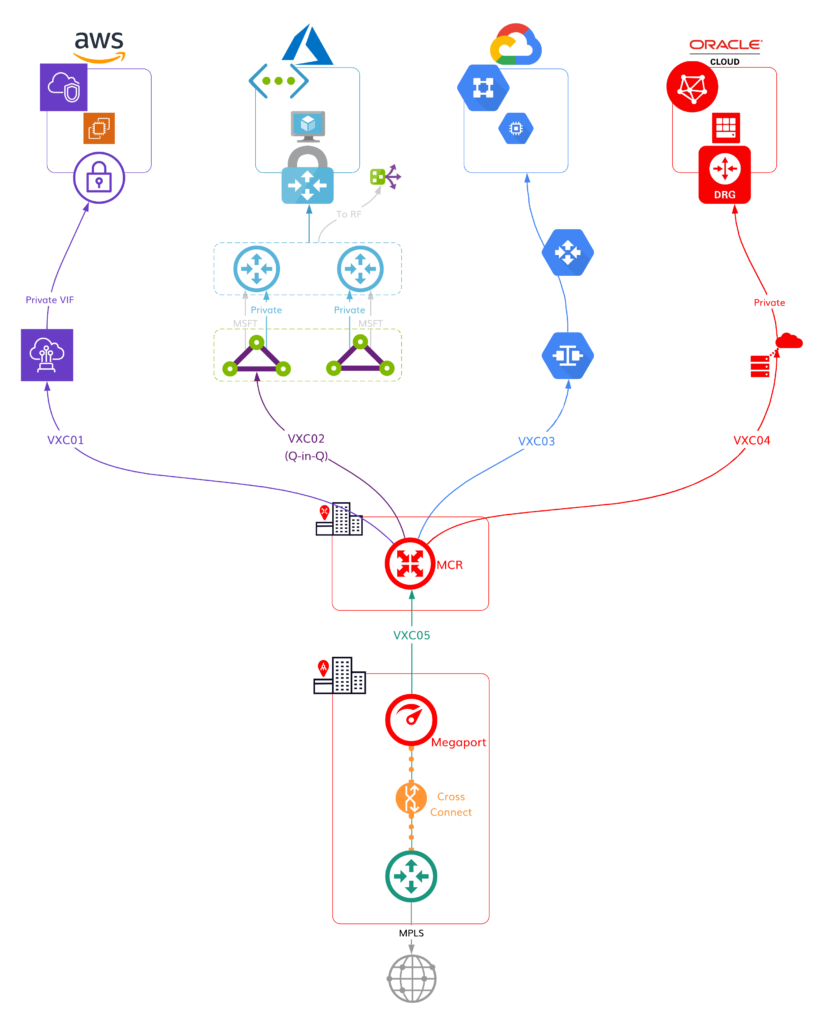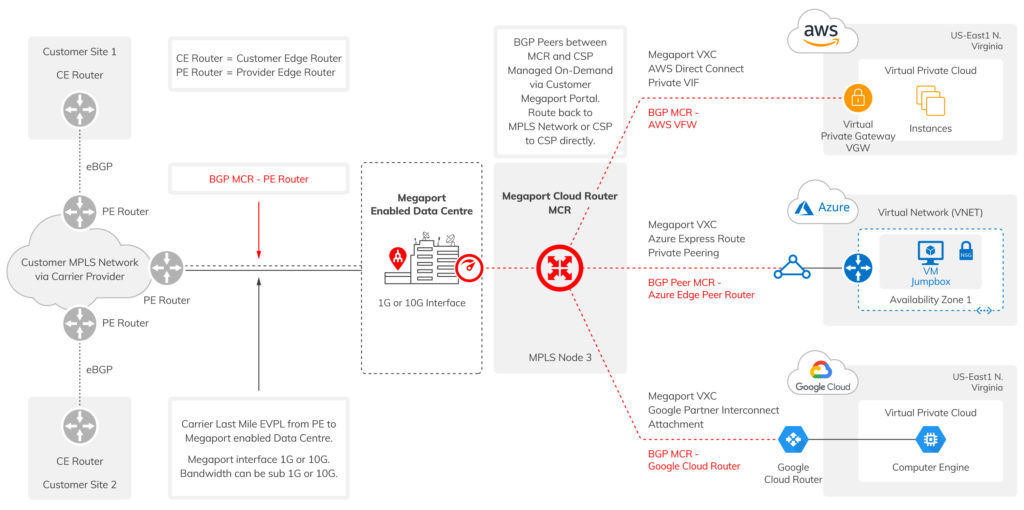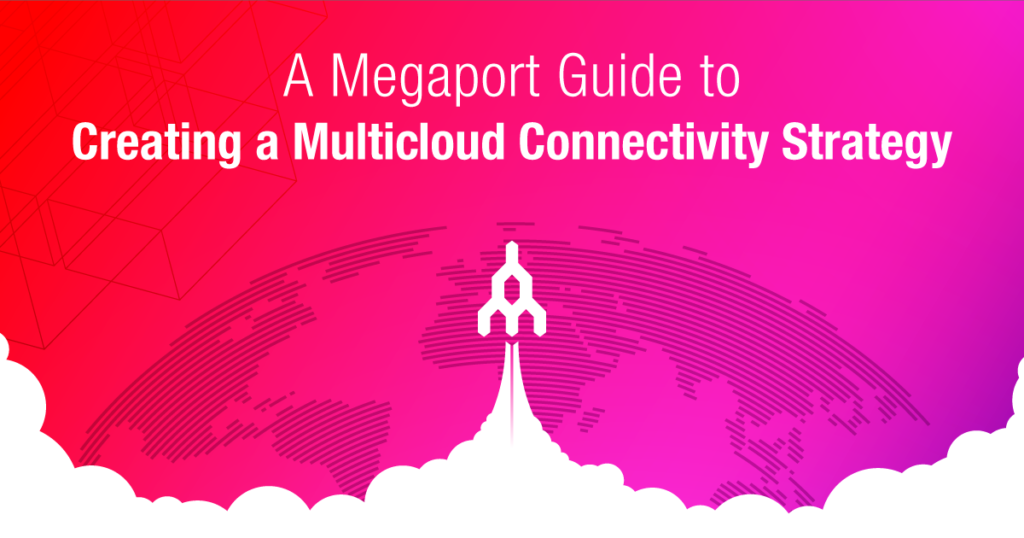
Are Your Clouds Creating a Storm? Shelter Your MPLS Network With Virtual Routing.
- December 2, 2020
Bring next-gen agility and flexibility to your legacy network infrastructure and extend the life of your MPLS in a hybrid cloud future.
So, you’ve embraced the journey to cloud and have decided to use Megaport for your flexible private connectivity to all the major Cloud Service Providers (CSPs). Now that you have the power and control to manage all your cloud connectivity needs, you realise there is a new weak link to consider. The fact is you can deliver high speed private connectivity in a matter of minutes but your traditional network was never designed to deal with such growth in networking in such a short period of time.
It could be that you have a firewall device that has been doing its rock-solid duty for many years and now it doesn’t have the interfaces or BGP capability to handle the cloud at today’s scale.
Or maybe you have a traditional MPLS network spanning regions or even the globe? These are often very expensive to maintain and operate. Things are changing for this type of network and it doesn’t matter whether you are managing Layer 3 over Layer 2 MPLS connections or a service provider is providing a MPLS Layer 3 VPN network. Many enterprises are now considering whether to continue investing in their expensive MPLS networks, or start looking at different approaches like SD-WAN.
Clouds on the horizon can mean storms ahead for MPLS
Even if your MPLS network has been doing its job very successfully for years and offers the type of reliability, resilience, security, and privacy that your enterprise expects, a sudden onslaught of new cloud connections can put your MPLS network under pressure.
If this is the case, then the Megaport Cloud Router (MCR) may be able to help to ease that pressure and form the basis of your future evolution to SD-WAN and cloud.
How to use virtual routing to shelter your MPLS network
First, you need to connect your MPLS network or firewall to the Megaport network in a data centre of your choice.Then in our portal spin up an MCR in your required metro area and connect it to your chosen CSPs at the data rates you require.

The MCR acts as a sheltering element by absorbing all of the BGP connections from the cloud providers and enabling cloud-to-cloud traffic routing. The benefit of this setup is that your MPLS network will support a single peer to the MCR from the Provider Edge (PE) device instead of dozens of BGP sessions. This provides for more efficient cloud-to-cloud services and lower latencies between clouds.

Solving Azure’s QinQ requirements and enabling network agility with smart APIs
Another problem solved by the MCR is the Microsoft ExpressRoute requirement to use QinQ 802.1ad for the multiple peering options. Low-end or older on-prem devices may not have support for 802.1ad which makes it difficult to terminate Azure and Microsoft peering connections without procuring new kit. By connecting Azure to the MCR, this issue disappears because the MCR auto-provisions the connection to Azure including the BGP configuration and QinQ requirements.
In large enterprises, there will be multiple teams working on network delivery with one team focusing on cloud and another working on the traditional on-prem networking. These teams need to collaborate to ensure the on-prem network isn’t overwhelmed by instant new connectivity to CSPs. The Megaport Software Defined Network (SDN) APIs and portal provides the perfect point for traditional and cloud networking teams to collaborate. These teams can work together to deliver cloud services to departments in an agile, immediate way.
Weather the storms and extend the life of your MPLS
Longer term, virtual routing allows an evolution away from MPLS networks on your own timescale. Using the Megaport SDN, you can easily connect multiple locations and data centres, thereby gradually replacing parts of your MPLS WAN as your business grows and evolves. Extend the life of your MPLS even further by using the Megaport Cloud Router to shelter it. Enjoy flexible data rates, global networking in your control with no lock-in contracts, and a stepping stone to SD-WAN.
For further reading on this topic see Modernizing Your MPLS Network with Megaport Solutions .


